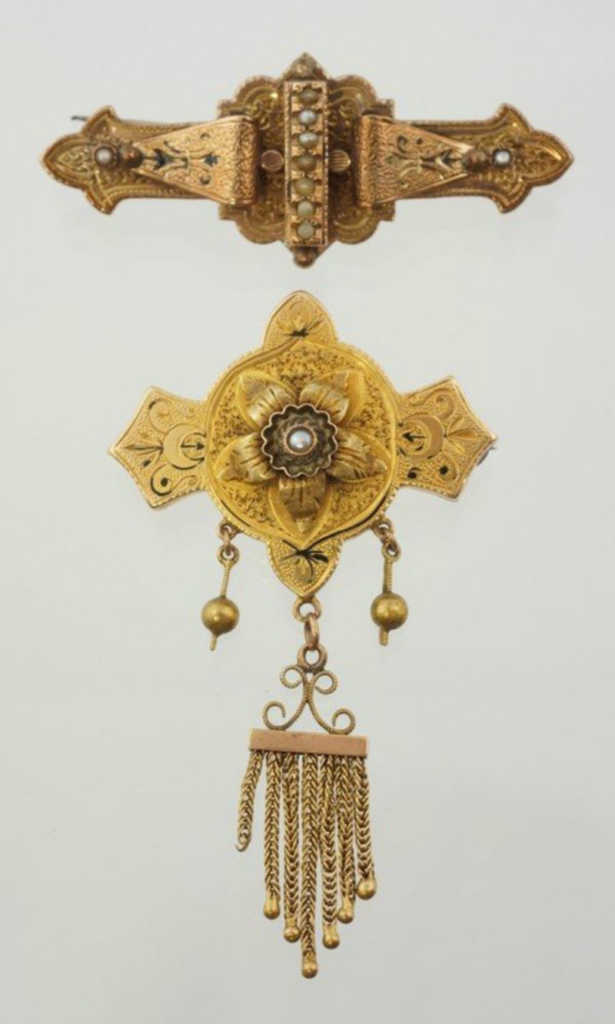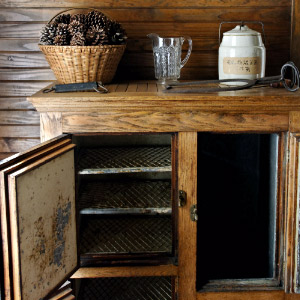How To Collect and Identify Vintage Brooches and Pins!
Whether or not you wear them or you just admire someone who wears them well, brooches can be an excellent way to breathe a little extra life and personality into your outfits.
Whether or not you wear them or you just admire someone who wears them well, brooches can be an excellent way to breathe a little extra life and personality into your outfits. A decorative piece of jewelry, usually metal, that fastens onto a piece of clothing, brooches tell a detailed story. There are many different styles, ranging from classical to current, pop culture references, so they’re great indicators of eras past and, because of that, there’s truly something for everyone. One of our favorite things is seeing how people transform a pin that we didn’t really connect with into something magical—instantly reminding us that there’s beauty in everything and that it’s all about how the brooch is worn (styling and confidence are key)! In any case, we’re totally fascinated by these tiny accessories, so we’re going to take a look at their history…follow along to learn more about them and how to go about collecting them!

History
Since brooches are typically grounded on safety pin-style, metal closures, it’s assumed that they were first created and worn in a period when people knew how to manipulate and work with metal. Because of this, the earliest evidence of brooches and pins is from the Bronze Age (3300-1200s BCE). After the Bronze Age, in the Byzantine period, brooches featured beautiful enameled colors, which then paved the way for the bejeweled brooches that followed, including those from the Renaissance (impressive gold work and precious stones) and Victorian periods (beautiful silhouettes and portraits).
While they are now mostly considered an accessory, it’s important to remember that brooches served a variety of purposes in earlier times. Sometimes used as a way to fasten items of clothing (dresses, skirts, shawls, etc…) brooches also were the linchpins to complicated hair-dos, before later becoming essential class markers at social events. You’d be surprised by how much information you could (and can) glean about someone based off their brooch. During the Renaissance, obviously gold pins were easily recognized, along with the presence of pearls, rubies, emeralds, sapphires and diamonds., so people were able to easily identify who the principle members of society were. Keep reading for some insight on other styles!

Styles
- Edwardian: mid 1830s to early 1900s, Edwardian style brooches capitalize on Victorian era designs, are mostly handmade, but feature more pearls and rhinestones then previous styles.
- Art Nouveau: 1880s-1910s, the Art Nouveau style can be recognized for its use of long lines and flower motifs.
- Art Deco: similar to how Edwardian designs were inspired by Victorian, Art Deco brooches played off of Nouveau lines. Patterns are more geometric and symmetrical, and florals have more of a presence.
- Mod/Hippy: Clearly reminiscent of the 60s and 70s, these pins are colorful: mod brooches a little more geometric and with more primary colors; hippy pins with more natural elements (wood, metal, gemstones) and smooth lines.
- Contemporary: contemporary pins contain lots of pop cultural references, are more commonly made of plastic and can include large, graphic prints or phrases.

Brands
- Trifari: Trifari made crown-shaped pins that became so popular and well-known, the symbol was incorporated into the company logo. Trifari also created the ever popular “Jelly Belly” brooches, featuring a variety of animals with a pearl-like gem as their belly.
- Coro: Coro pins were made with metal appendages, or “legs”, extending from the main piece. These separate metal legs are decorated with pavé rhinestones and vibrate when the wearer moves, causing the brooch to twinkle and shimmer. The Coro Duette is a famous example of the style.
- Eisenberg & Sons: These pins come in a variety of shapes: some are more abstract, while others are the cutest depictions of little animals. They’re decorated with brightly colored glass and have a wonderful way of catching the light.

Collecting
If you’re interested in started or growing your antique and vintage brooch collection, we’ve noted a few things that are good to keep in mind while shopping. Some items that people collect are easier to collect than others; in this case, because brooches have had such a solid part in history, it can be tricky to decipher which are authentic and which are fake. That’s why it’s important to do the following:
- Read books: Dust off your old art history books or your coffee table fashion books. By perusing through these pages, you can get a better sense of which styles came from which periods, along with what styles you’re drawn to in particular.
- Go everywhere: Go to as many antique shops, estate sales and auctions as you can so you’re inundated with this jewelry and can really get comfortable with it.
- Look at the back: When you’re examining brooches, yes, you obviously want the front to be in good condition (and if you can identify real and faux gems, even better!), but you also should carefully examine the back of the pin. If it’s a famous brand, there will be some kind of maker’s mark or identification number. Plus, you can also see whether or not the clasp has been repaired and if so, the quality of how it was fixed.
- Look for you: if you want to have a collection containing only the most authentic, be ready to shell out some serious dough. If, however, you are just looking for beautiful pieces that appeal to you, we encourage you to not worry so much about authenticity and rarity. If you like it and it resonates with you, go for it!

We hope you’re feeling even better about your brooch collection and impending search. It’s nice to know that brooches and pins still carry meaning today and that they’re still so easily utilized and able to add some punch to any outfit! Considering they have featured prominently throughout history, brush off any you already have and show them some love—they tell an incredible story!
SKM: below-content placeholderWhizzco for DOT

